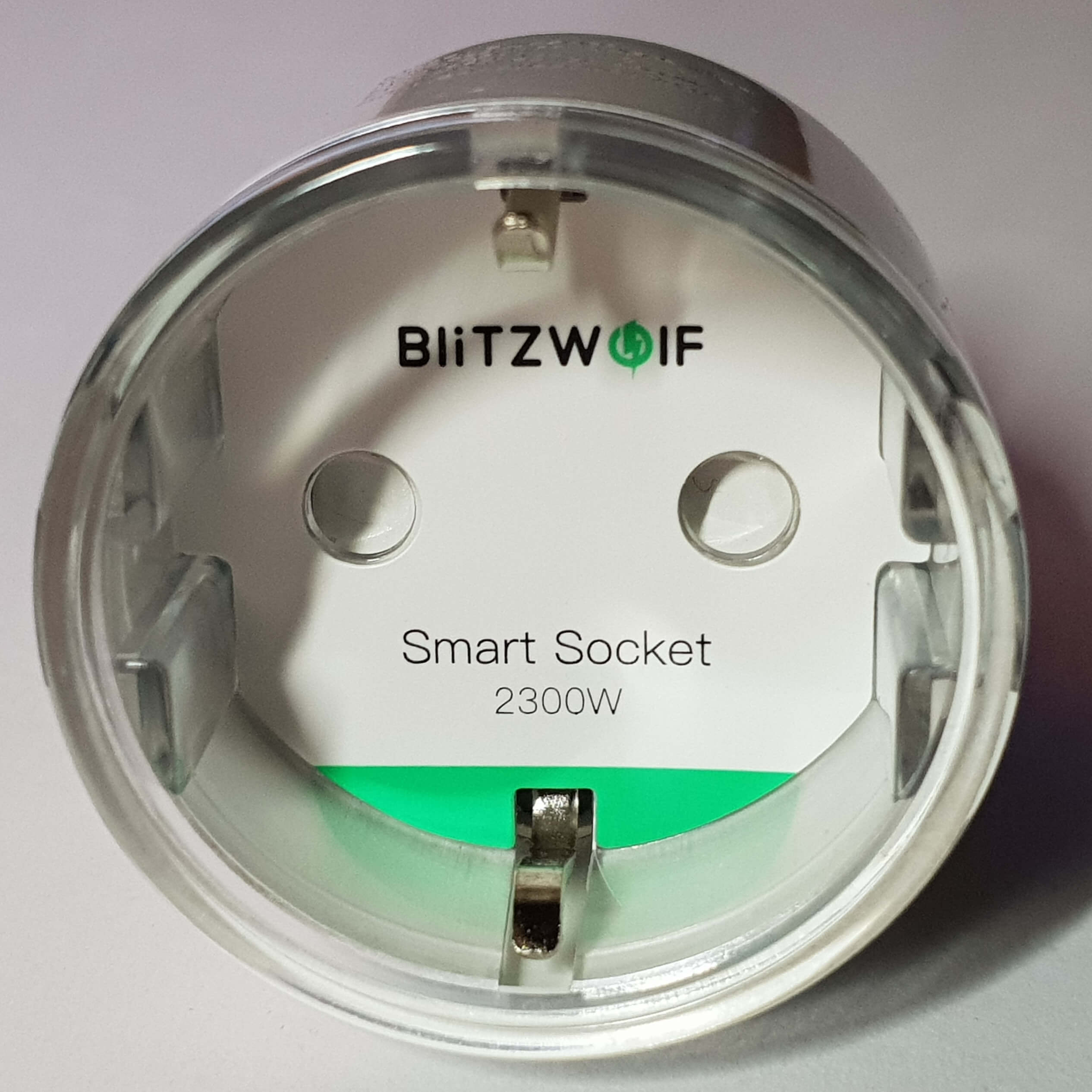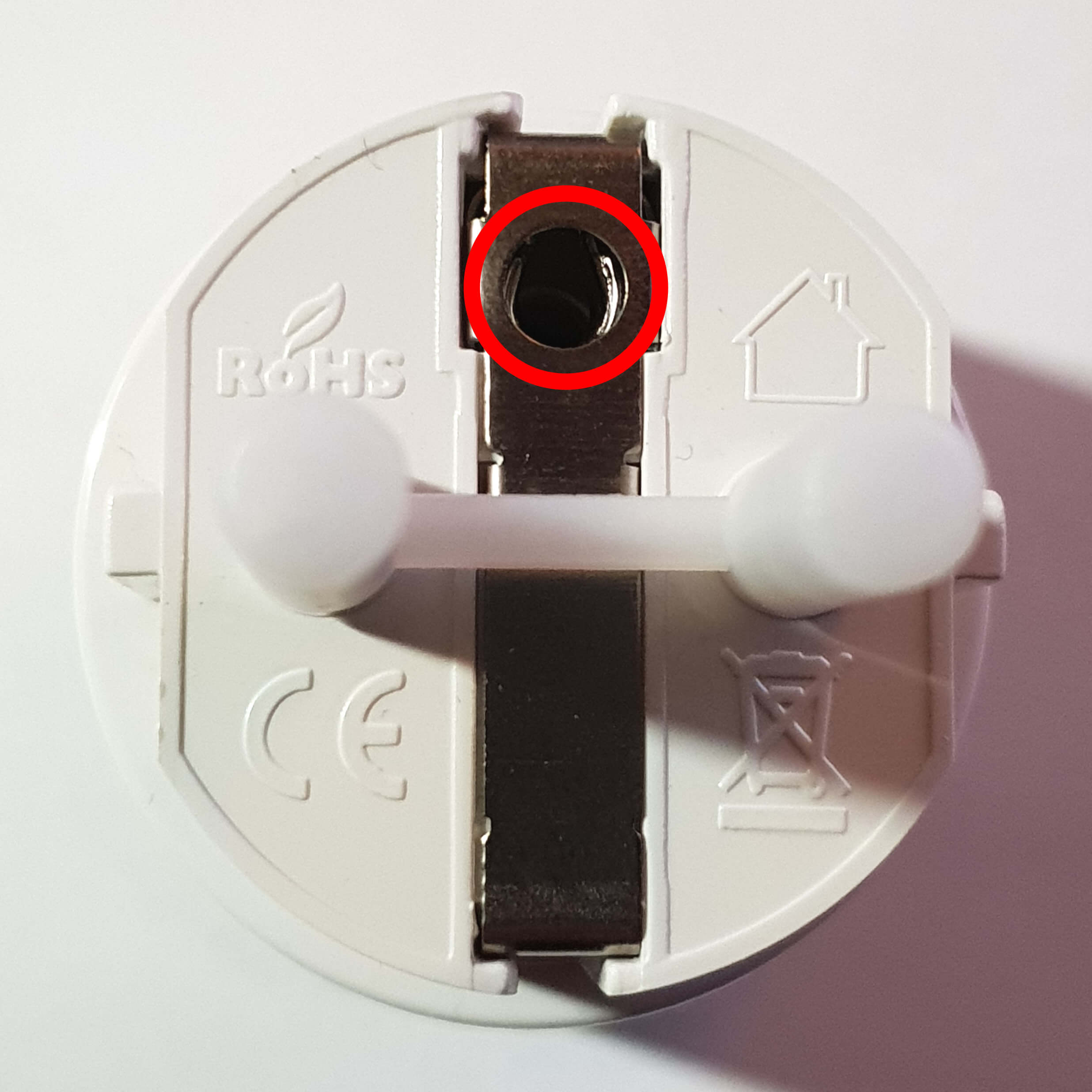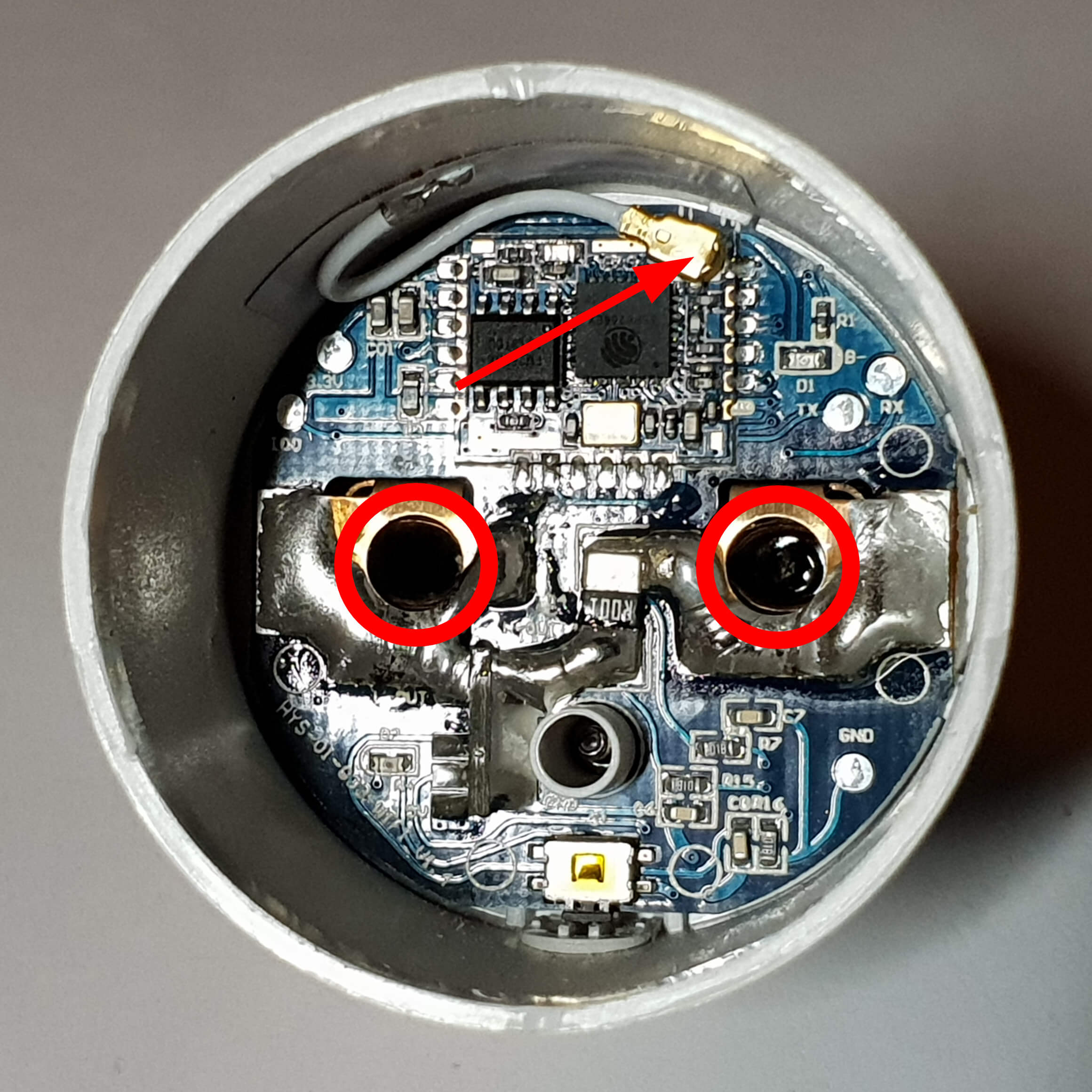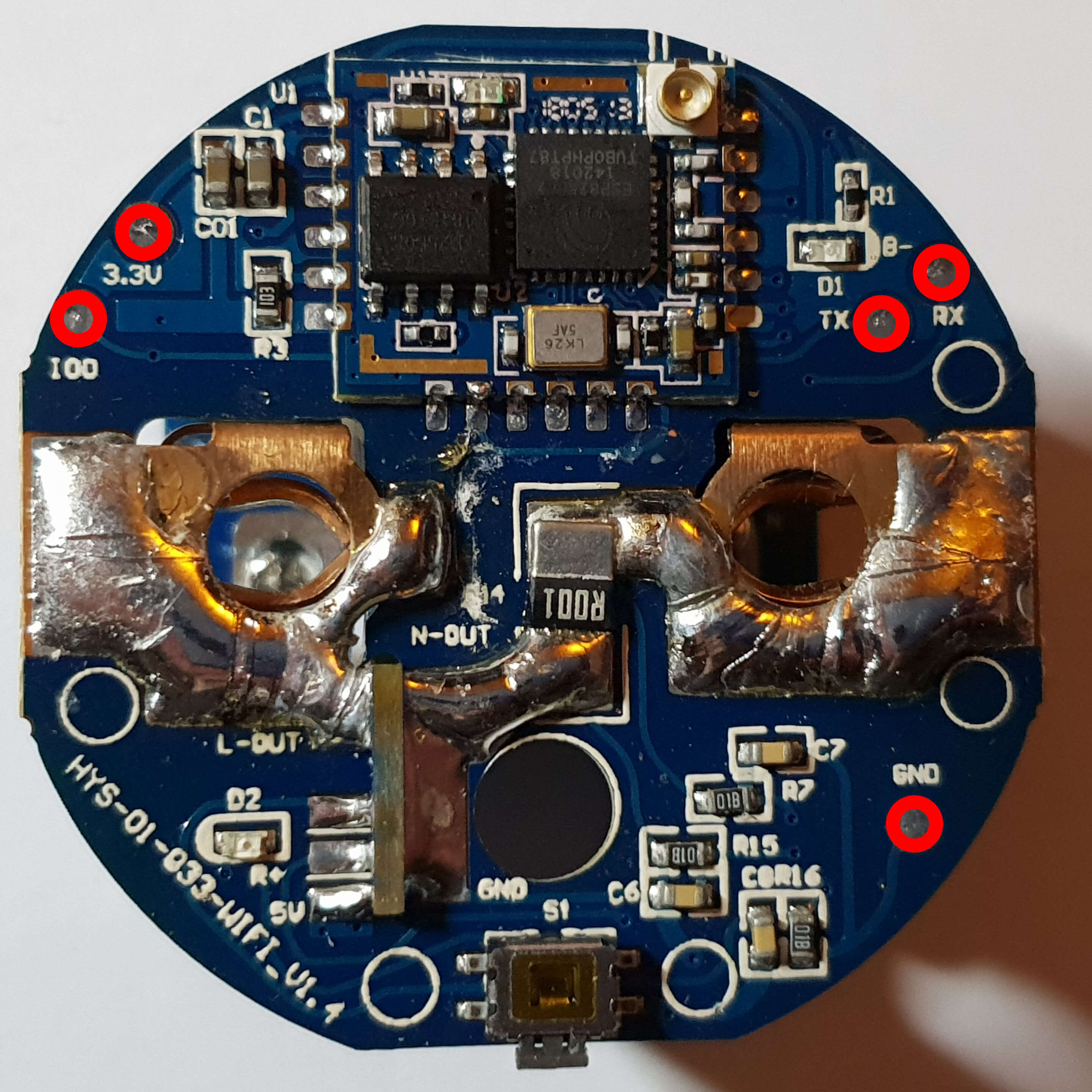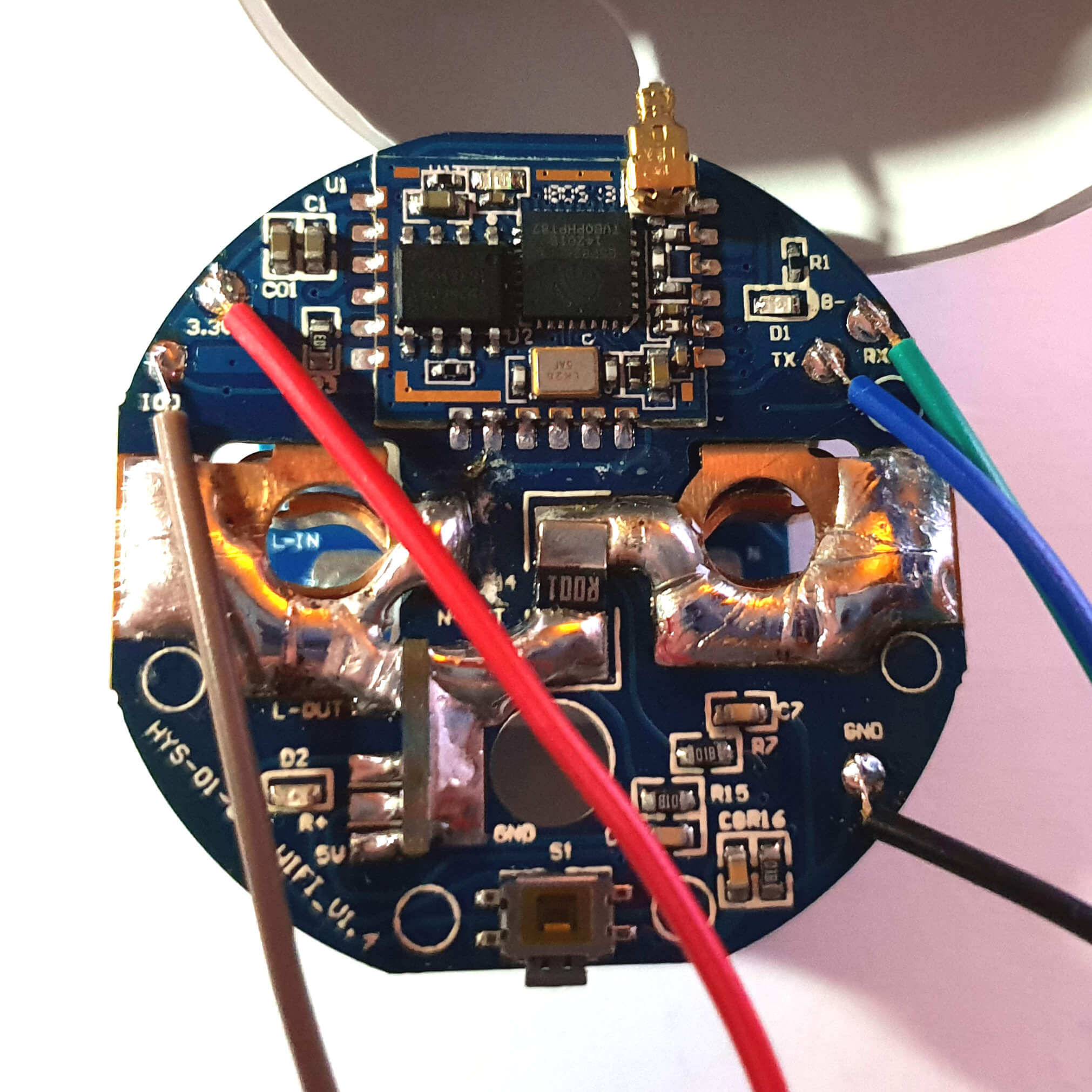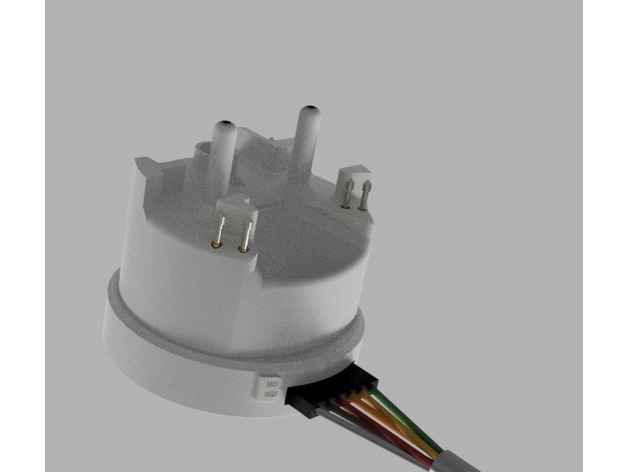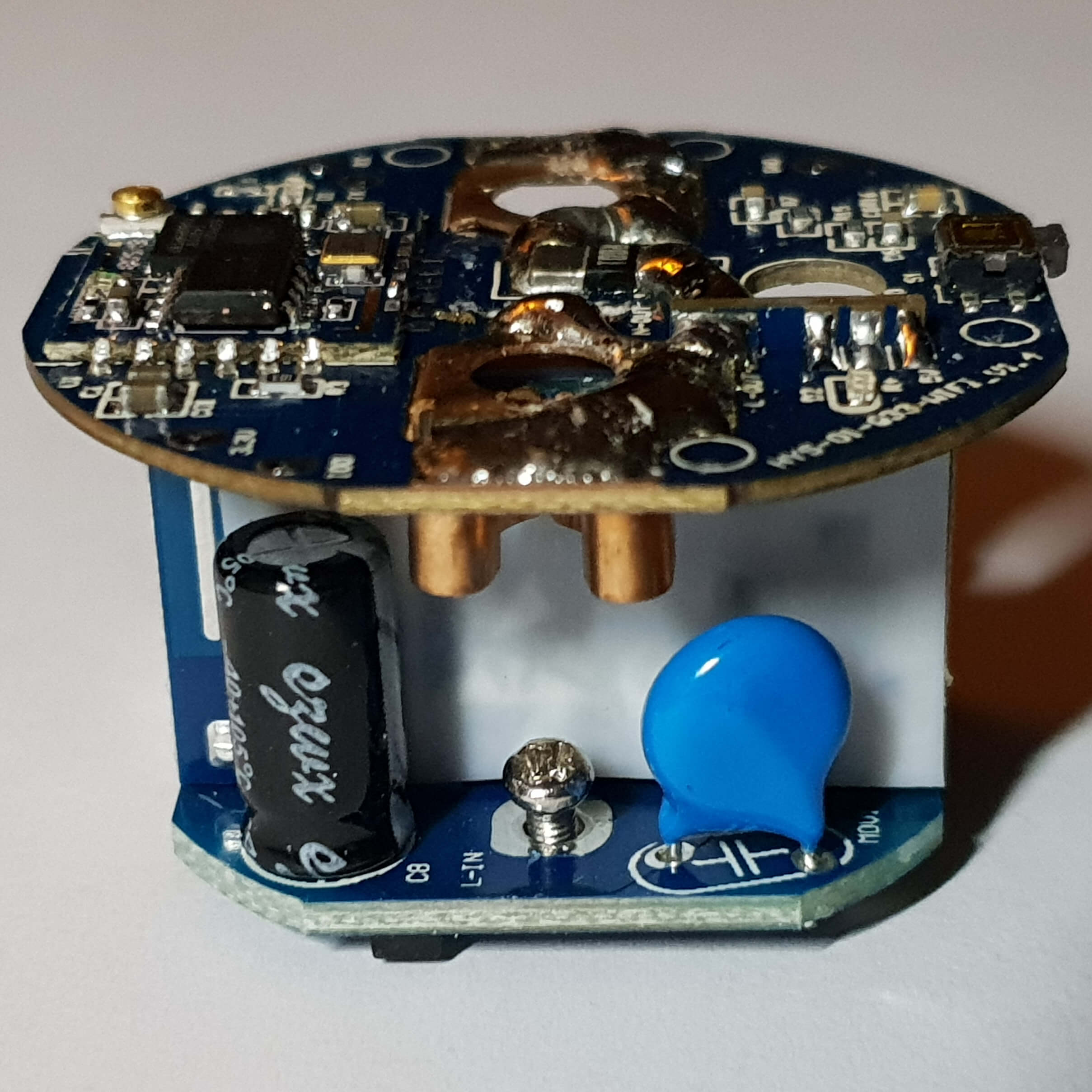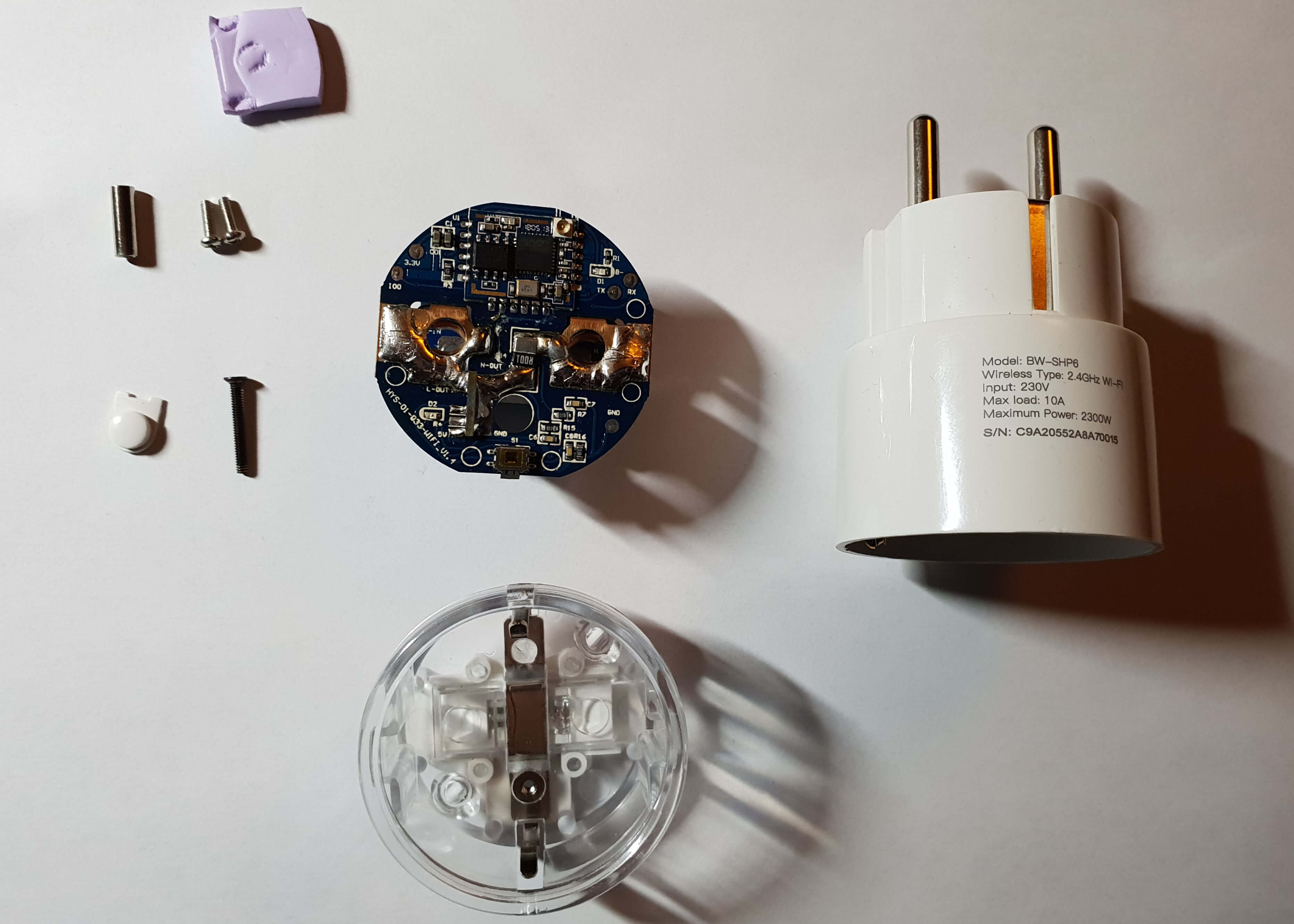The BlitzWolf BW-SHP6 and the Gosund SP111 are basically the same device, barring the branding.
Product page:
Device needs exact calibration with a load >=60 Watt to gain good results! For further infos see Issue #4727
Please see the Hardware Preparation page for general instructions.
Disconnect device from power source!
Remove one screw on the back of the device. PH1 screwdriver required.
Undo 2 screws. PH1 screwdriver required. Disconnect antenna.
Carefully remove PCB from casing for easier soldering.
- Don't stress antenna cable too much.
- Don't lose metal tube.
Solder cables to the ESP Pins.
If you do not want to solder you can try using crocodile clips and manually push a jumper cable first to IO0 (enter flash mode while booting, i.e. connect IO0 to ground) and then during flashing push a jumper to TX. Just be careful to not cause any short-circuit with the clips on the other side of the pads.
Connect serial adapter and make a shortwire between Pin IO0 and GND during startup (for entering flashmode).
Erase flash to avoid issues with dropping WiFi connection.
Example using esptool:
esptool.py --port COM3 erase_flash
Flash Tasmota.
Select the correct configuration under Configuration -> Configure Module or apply correct template
The following programming adapter could be an option, which requires no soldering or significant disassembly on the SHP-6. It significantly reduces the effort of reflashing multiple SHP-6 units. Thingiverse link
Approach the calibration using the Method 2. If not satisfied with the results, you could mod the SMD direct measure resistor or mitigate this using a Tasmota set of rules (values valid only for the 10A model):
Rule1 ON energy#power<=100 DO Currentcal 2500 BREAK ON energy#power<=500 DO Currentcal 2635 BREAK ON energy#power<=1000 DO Currentcal 2788 BREAK ON energy#power<=1500 DO Currentcal 2942 BREAK ON energy#power<=2000 DO Currentcal 3095 BREAK ON energy#power<=2500 DO Currentcal 3249 BREAK ON energy#power>2500 DO Currentcal 3402 BREAK
Rule1 1Take the CurrentCal values above as a first approach and should be corrected through the Tasmota Method 2 calibration procedure: [[devices/Power-Monitoring-Calibration]]
switch:
- platform: mqtt
name: "Blitzwolf"
state_topic: "stat/blitzwolf/POWER"
command_topic: "cmnd/blitzwolf/POWER"
payload_on: "ON"
payload_off: "OFF"
retain: false
sensor:
- platform: mqtt
name: "Blitzwolf Energy Today"
state_topic: "tele/blitzwolf/SENSOR"
value_template: '{{ value_json["ENERGY"]["Today"] }}'
unit_of_measurement: "kWh"
- platform: mqtt
name: "Blitzwolf Energy Yesterday"
state_topic: "tele/blitzwolf/SENSOR"
value_template: '{{ value_json["ENERGY"]["Yesterday"] }}'
unit_of_measurement: "kWh"
- platform: mqtt
name: "Blitzwolf Energy Total"
state_topic: "tele/blitzwolf/SENSOR"
value_template: '{{ value_json["ENERGY"]["Total"] }}'
unit_of_measurement: "kWh"
- platform: mqtt
name: "Blitzwolf Power"
state_topic: "tele/blitzwolf/SENSOR"
value_template: '{{ value_json["ENERGY"]["Power"] }}'
unit_of_measurement: "W"
- platform: mqtt
name: "Blitzwolf Voltage"
state_topic: "tele/blitzwolf/SENSOR"
value_template: '{{ value_json["ENERGY"]["Voltage"] }}'
unit_of_measurement: "V"
- platform: mqtt
name: "Blitzwolf Power Factor"
state_topic: "tele/blitzwolf/SENSOR"
value_template: '{{ value_json["ENERGY"]["Factor"] }}'